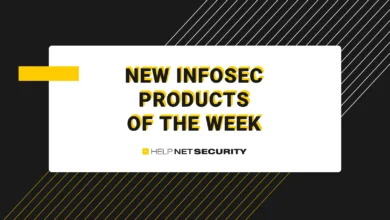Inside Walmart’s AI Security: Startup Mentality, Enterprise Defense

▼ Summary
– Walmart’s CISO discussed securing autonomous AI systems against new threats like data exfiltration and API misuse using AI Security Posture Management.
– The company is modernizing identity management with a startup mindset, focusing on simplifying IAM and adopting protocols like MCP and A2A for granular access controls.
– Walmart applies zero trust principles consistently across its hybrid multi-cloud infrastructure, using identity-based segmentation rather than network location.
– The retailer uses AI-driven defenses, including machine learning for threat detection and generative AI for adversary simulation, to proactively counter evolving cyber threats.
– Centralizing AI through Element AI enables ‘velocity with governance’ and concentrated defense expertise, embedding security controls and streamlining innovation.
Walmart’s approach to AI security combines enterprise-scale challenges with the nimble thinking of a startup, offering a compelling blueprint for organizations navigating the complexities of modern cybersecurity. In a recent discussion with Jerry R. Geisler III, Executive Vice President and Chief Information Security Officer at Walmart, key insights emerged about how the retail giant is tackling autonomous AI risks, identity modernization, and hybrid cloud security.
Geisler emphasized that agentic AI introduces threats that bypass traditional controls, including data exfiltration, API misuse, and cross-agent collusion. To counter these, Walmart employs AI Security Posture Management (AI-SPM) for continuous monitoring, data protection, and compliance. This proactive stance ensures operational trust even as AI systems grow more independent.
When it comes to identity and access management, Walmart adopts a ground-up mindset. Geisler’s team frequently reimagines solutions as if building from scratch, focusing on modernizing IAM stacks for simplicity and effectiveness. Protocols like MCP and A2A enable real-time, context-sensitive access decisions, using short-lived credentials that align with Zero Trust principles. Access is based on identity rather than network location, ensuring policies remain consistent across hybrid multi-cloud environments.
Walmart’s extensive use of Google Cloud, Azure, and private cloud infrastructure shapes its segmentation strategy. By enforcing service edge standards, the company applies Zero Trust uniformly, regardless of where workloads reside. This identity-centric approach prevents vulnerabilities from spreading across environments.
As AI lowers barriers for sophisticated threats like phishing, Walmart leverages machine learning and generative AI for both defense and adversary simulation. These technologies help detect behavioral anomalies and craft realistic attack scenarios for red-teaming, building resilience through continuous testing.
Open-source models within Walmart’s centralized Element AI platform present unique challenges, but the company addresses them through concentrated defense strategies. Centralization allows for embedded security controls from the start, creating a unified framework that balances innovation with governance. This approach not only accelerates development but also focuses expert talent and advanced protections where they are most needed.
For incident response, Walmart relies on intelligent automation and SOAR platforms to orchestrate rapid workflows across global operations. Automation helps assess risk, prioritize actions, and contain threats swiftly, ensuring security remains both fast and frictionless at scale.
Talent development is another critical pillar. Through initiatives like Live Better U and the annual SparkCon event, Walmart provides education, certifications, and networking opportunities to equip associates with hands-on cybersecurity skills. These programs help attract and retain talent capable of navigating the evolving AI threat landscape.
Reflecting on the development of Element AI, Geisler highlighted two major lessons: centralization enables velocity with governance, simplifying AI development while ensuring security consistency, and it allows for concentrated defense and expertise, focusing top talent and robust controls at critical points. These insights guide Walmart’s future decisions about when and how to centralize emerging technologies, ensuring architectural choices support long-term security and innovation.
(Source: VentureBeat)





